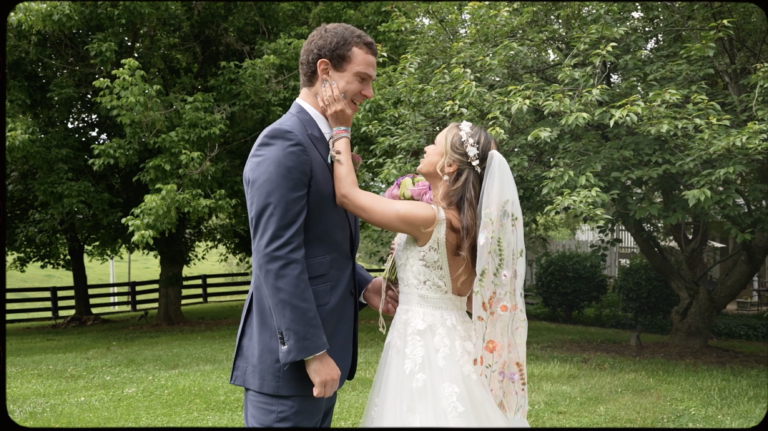Photo bytoanmda
onPixabay
Elevating the art of wedding photography,
Prism photography
captures the magical moments with a unique, artistic flair. This technique, which involves using a prism to reflect light and create captivating distortions in images, has gained significant popularity in recent years. I am a wedding photographer based in Virginia, and I am eager to share some insights about this fascinating technique, its application in wedding photography, and tips on how to master it.
The Advent of Prism Photography
Prism photography, a method ofbending light to create distortions and flare in photos, has been gaining popularity since its inception in 2012. This technique turns ordinary images into extraordinary, visually stunning masterpieces. From adding a rainbow effect to creating kaleidoscopic dreamscapes, prism photography offers a diverse range of possibilities to spice up your wedding photographs.
The Science Behind Prism Photography
A prism, typically made from glass, plastic, or other materials, is a tool thatrefracts light. It separates white light into its individual colors – red, orange, yellow, green, blue, indigo, and violet. When a prism is placed between your camera lens and your subject, it captures the distortions, reflections, and rainbow light that the prism creates, resulting in mesmerizing images.
Setting the Foundation: The Basics
Before diving into prism photography, always ensure that the fundamentals of a good photograph are in place. The subject should be in good light and the composition should be pleasing. The prism is not a substitute for these essentials, but rather an enhancement to already well-composed photographs.
The Importance of Light and Aperture in Prism Photography
The amount of light entering your camera is crucial to achieve impressive results with a prism. A prime lens with a shallow depth of field is recommended for close-proximity subjects. The aperture, which determines how much light hits your camera sensor, is another critical factor. An aperture of at least 2.8, which allows a fair amount of light to enter, is typically recommended.
The Role of Manual Focus
Working with manual focus allows you to quickly adjust the relationship between your lens, the prism, your subject, and the light. This is invaluable in achieving the desired prism effects.
Choosing the Right Lighting Conditions
While prism photography thrives on sunlight, direct overhead light or harsh lighting conditions may not be optimal for prism effects. Instead, using indirect light or artificial light sources can create more appealing effects.
The Art of Prisming
Once the prism is in front of your camera lens, adjust the focus so that you can see clearly through the prism. Move the prism around to create rainbows and other effects. Remember, there is no one-size-fits-all technique to achieve a particular prism effect. It’s all about trial and error. The more you practice, the better you’ll understand how your tools interact, and the more intuitive your prisming sessions will become.
Types of Prisms for Prism Photography
A variety of prisms are available for prisming photography, but the most common is a small, six-inch triangular prism. This type of prism is portable and can easily be held in one hand in front of the lens. However, it’s important to remember that the prism must be large enough that its edges aren’t in the frame.
Beyond Triangular Prisms
While triangular prisms are popular, remember that any object that refracts light can potentially be used in prism photography. Items such as plastic water bottles, ordinary panes of glass, or clear plastic can scatter light to create a rainbow effect. Even the bottom of a smartphone can create a cool reflection effect when placed on the bottom of a lens.
Prism Photography: A Unique and Memorable Offering
As a wedding photographer, offering unique and memorable images to your clients is paramount. Prism photography, with its rainbow effects and psychedelic light, can be one more effect in your repertoire, setting you apart from other photographers.
The Future of Prism Photography
With the rise of Instagram and the mass adoption of DSLRs, more and more photographers are exploring prism photography to differentiate their style and technique from others. Leveraging prisms to manipulate light and subject matter in compositions turns ordinary situations into extraordinary ones. As more photographers share their innovative ideas openly, the popularity of prism photography is set to grow even more.
Conclusion
Prism photography has undoubtedly revolutionized the field of wedding photography. Its ability to create stunning in-camera effects without the need for post-processing software makes it a compelling choice for photographers eager to produce unique and artistic images. As a wedding photographer, mastering prism photography can add another dimension to your work, helping you deliver breathtaking, one-of-a-kind images that will leave your clients spellbound. Remember, the sky’s the limit when it comes to creativity. So, pick up a prism, start experimenting, and let your imagination soar!
“Photography is getting more and more competitive. To stay on top of the heap, I need to continue developing my artistry with new styles and techniques. Prisming has added a stylistic flare to my images that keeps my clients impressed.” –Ethan from Ethan Film and Photo.
To learn more about prism photography or to book a session, feel free to contact me atEthan Film and Photo. As an experienced and creative wedding photographer in Virginia, I’m passionate about capturing your special moments in the most unique and beautiful ways possible.




